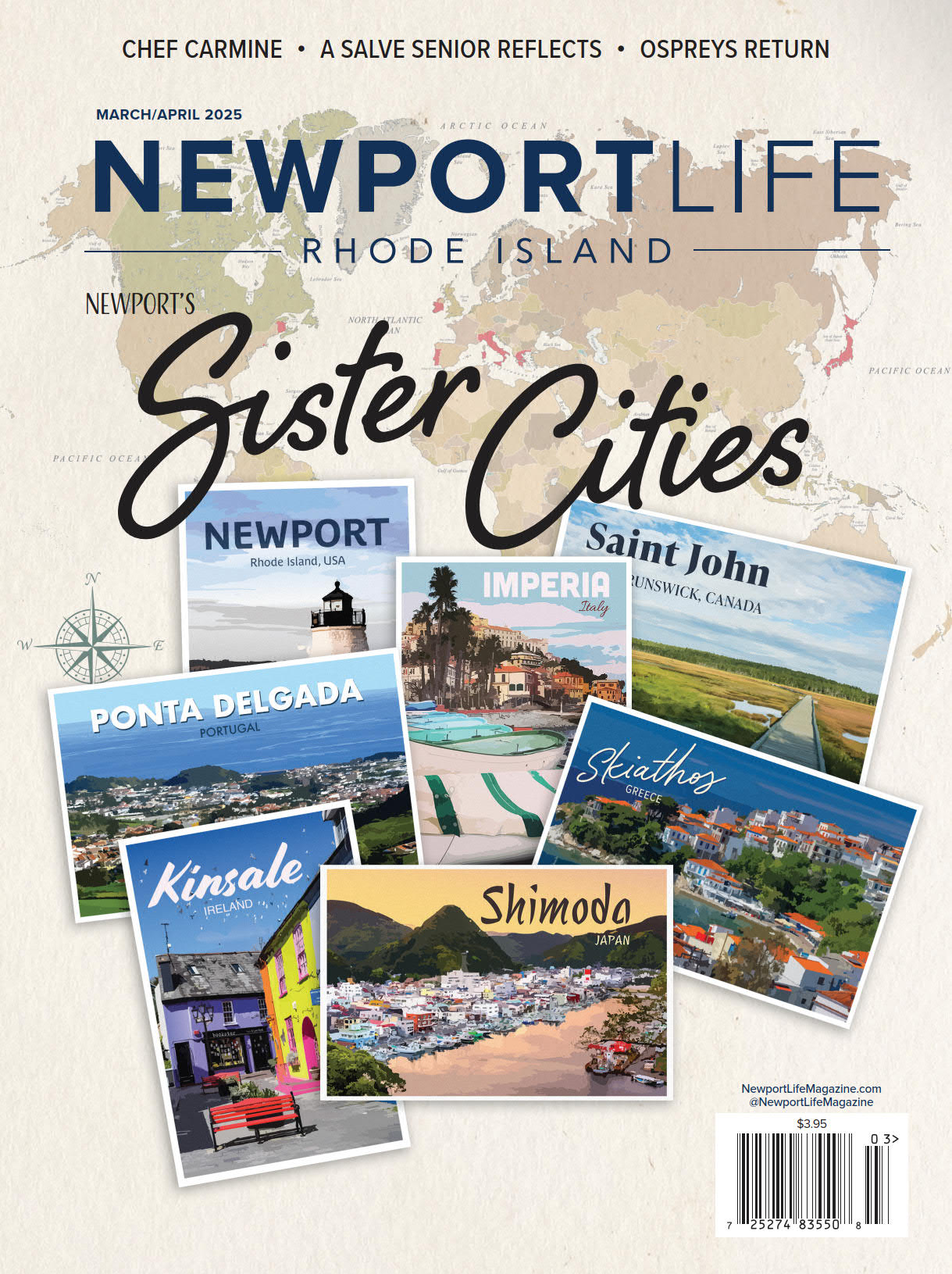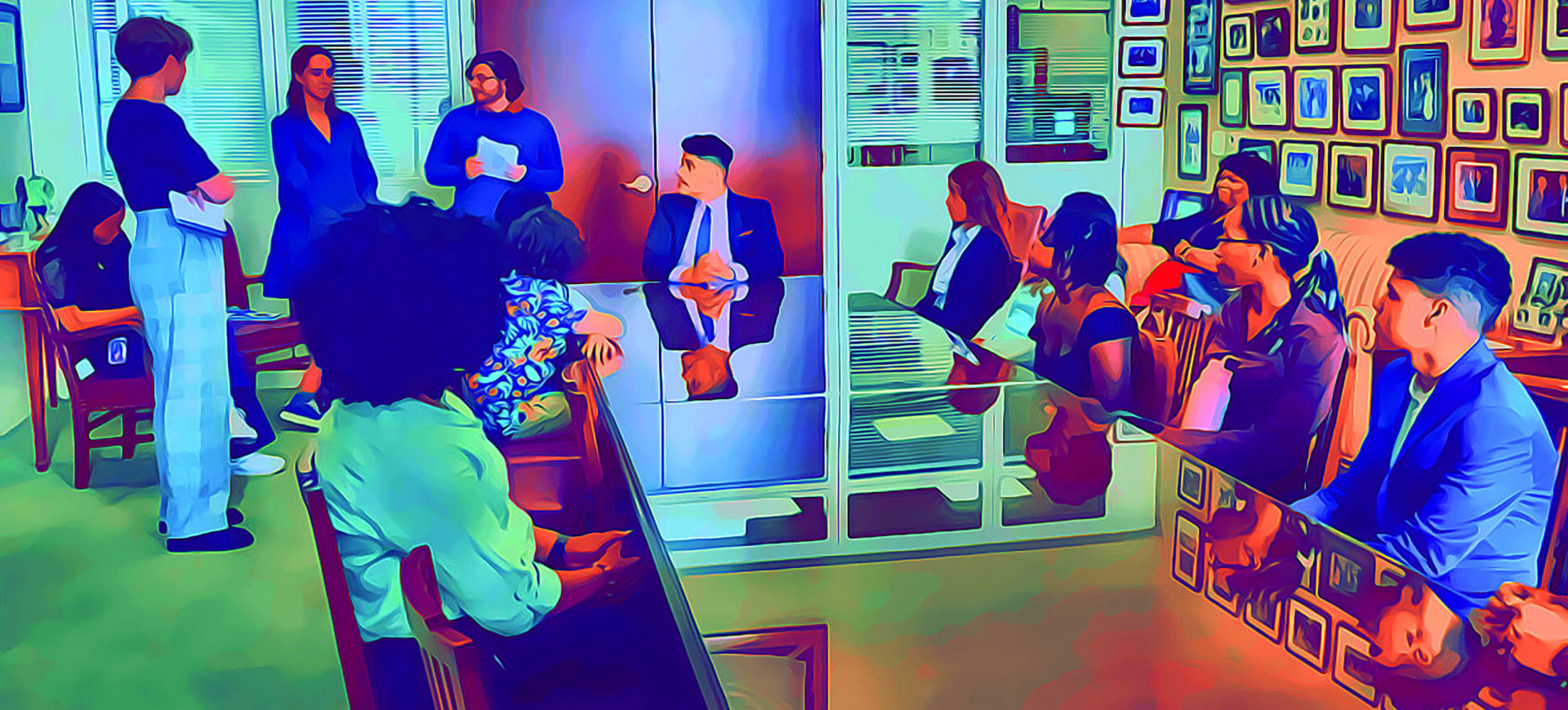College Bound
By Andrea E. McHugh
Local educators are partnering to pave the path to higher education for first-generation students
The very idea of applying to college can be overwhelming to many high school students, and the actual, hands-on preparation and application process is often even more unnerving. Before those steps are even made, there’s so much for students and families to consider: What college is the best fit, are they able to
leave home and go to a school some distance away, what field of study might be of interest, private or public, and of course, how will they pay for it all?
For first-generation college students, the process can be even more daunting, but Salve Regina University has partnered with Newport’s Rogers High School to make the road to college readiness a smoother one for these students.
Spearheaded by Aida Neary, a Newport resident and Salve Regina’s Director of Community Educational Partnerships, the Pathways program was born out of a series of conversations with the Newport community about how the university can better serve the city’s student population.
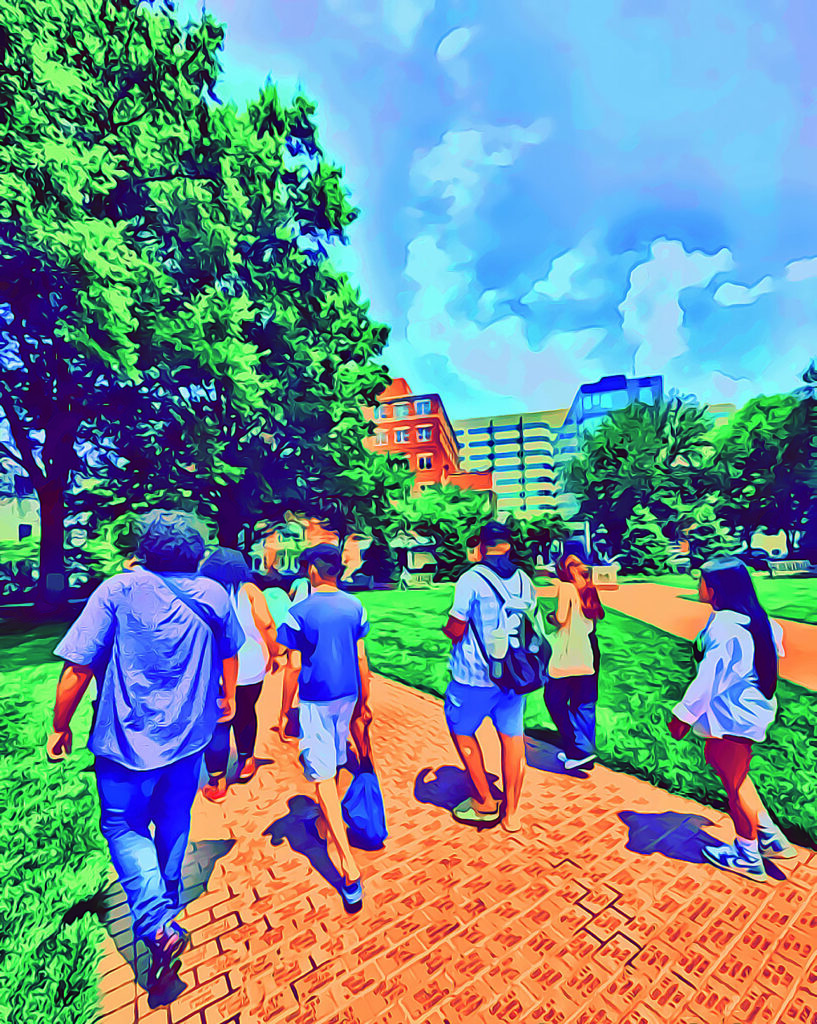
A focus on opportunity
Through these discussions, they established that Salve Regina’s outbound efforts were exceptional — university students volunteer in a variety of community programs that support area youth. But inbound efforts were lacking. There was a clear disconnect between local students and the campus community, its vast resources, and how they, too, can pursue postsecondary education.
“The conversation was not about money,” says Neary. “The conversation was about opportunity. So, when we asked, basically, ‘What would you like to see?’ It was, ‘We would like to see our students at Rogers, particularly first generation, low-income students, we would like them to have access to what it is to be, in a sustained way, on a college campus with access to what kids whose parents have gone to college have access to — just knowledge and opportunity.”
It’s hard to imagine a more uniquely qualified person than Neary, both personally and professionally, to craft such a program. In addition to her current role at the university, she’s a former Newport School Committee member and a co-founder of Building Newport’s Future, a grassroots organization that
lobbied for passage of the ballot measure to secure funding for the new Rogers High School and Pell Elementary School renovations (the new high school broke ground in June 2022 and is currently under construction), and she has two children in Newport Public Schools; a son at Rogers and a daughter at Thompson Middle School.
Perhaps even more apropos, Neary, both French and Senegalese, has firsthand knowledge of what it’s like to blindly navigate the U.S. college application process. “I absolutely had no idea,” where to start, she says, recalling her own experience. Composing essays, SATs, financial aid — it was all unchartered territory for Neary and her family.
Creating a path
“Pathways” is designed to shepherd first-generation students and their families to high school graduation and college enrollment. At Rogers, data shows that guidance is needed. Nearly 20-percent of Rogers’ 667-student population are considered “multilanguage learners” (referred to as “English language learners” in some school districts), defined as any student who doesn’t learn English as their first and
primary language.
Rhode Island Department of Education’s data for Rogers’ 2020-21 graduates show 74.2% of multi-language learners (MLLs) received their diploma compared to 84.9% of students whose first language was English. The gap is even wider when it comes to dropout rates: only 6.2% of students whose first language is English compared to a staggering 22.6% of MLLs.
Retention rates also differ greatly. Within one academic year of the 2021 graduation, 55.3% of non-MLLs were enrolled in a twoor four-year postsecondary institution as opposed to 29.2% of MLLs (or another way to look at it, 44.7% of non-ELLs were not enrolled compared to 70.1% of non-MLLs).
The high school’s assistant principal, Mike Monahan, who has a lengthy career in public education in Rhode Island, knows all too well the power of opportunity. “Success doesn’t come individually. It truly takes a village, and if you don’t know all the members of the village, you might fall short in some areas
where you certainly are capable,” he explains.
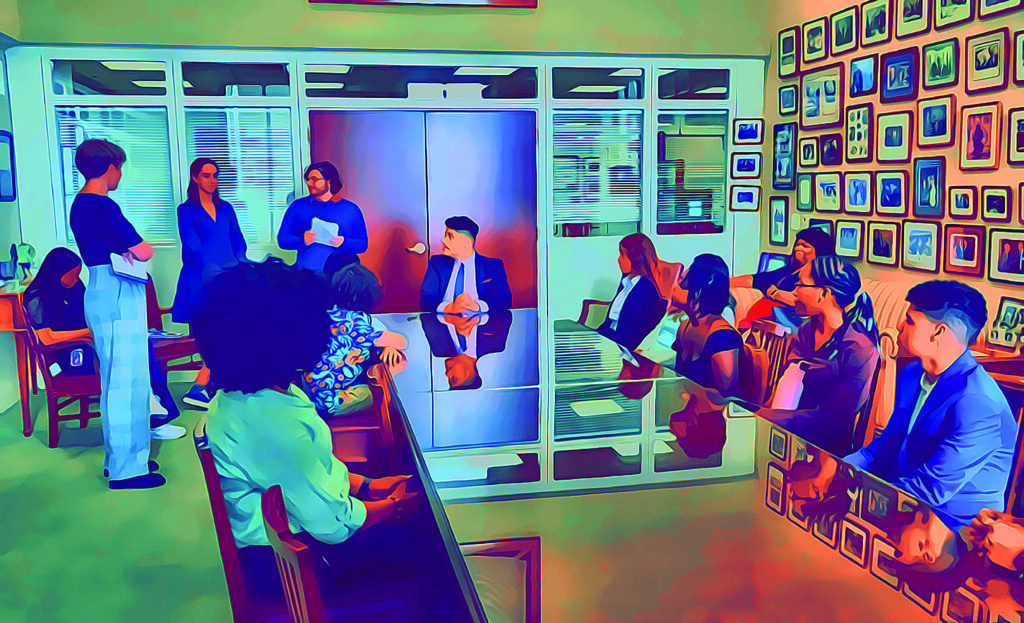
Rallying the village
When Neary first secured a grant from the van Beuren Charitable Foundation to help fund the Pathways program in June of 2022, Monahan was her first call. The two worked diligently, with input from teachers and guidance counselors, to develop the blueprint of the program and criteria for student candidates.
They also enlisted the help of Ana Maria Gomes, Rogers’ MLL Community Liaison, who works closest with
multilingual students. She also translates and interprets for their parents and helps staff better communicate with and build relationships with these students and their families.
“When I came here, I had the same situation,” reflects Gomes, whose family immigrated from Portugal to Venezuela — and then to the U.S. “So, I know what those families feel and what they need.”
Gomes is quick to point out as well that while many resources are available in different languages, that only scratches the surface. In addition to the array of languages spoken across Latin America, for example, there are also many dialects. In other words, there’s no one-size-fits-all when it comes to translation.
Ideal candidates, explains Monahan, were not necessarily simply “straight-A” students, but those in good academic standing who have demonstrated college potential who may simply not have the network to show them how to navigate the process.
“A huge part of success is having those role models; people who have been there and done that who can help guide you through,” Monahan says. “Those same people who have been through it, they know what resources are available, even in their own high school, like the guidance counselor, the college advisor, all those things you need, that you use here and there along the way.”
A contract for the future
Pathways was designed as a three-year program offered to first-generation students (or first to go to college in their family) entering their sophomore year of high school. To qualify, students must be on free or reduced lunch (which is more than half of the Rogers student body), and they must be enrolled in honors classes. The maximum number of participants per year is 15, and commitment to the program is non-negotiable.
“There’s an application process — an eight-page application — and you have to tell me why you want to do this, because it’s a three-year commitment,” explains Neary. “You sign a contract, and your parents sign a contract. This is not optional, and it’s not, quote unquote, ‘an after-school program.’” Transportation to and from the campuses, and the institutions, businesses and organizations they visit, is provided to students.
As to be expected, there were some adjustments made throughout the first year, which launched in the fall of 2022, including reducing the days everyone met from two to one. Neary and Monahan also worked with students’ individual schedules to ensure Pathways programming didn’t conflict with other commitments, such as athletics, clubs and activities.
“And in many cases, students have to work or take care of a younger sibling,” explains Monahan. “We don’t want to create new barriers. It shouldn’t be an ‘either/or.’ You should be able to participate in a number of activities, because that’s all part of the success; managing activities and participating and
learning lessons from all those things.”
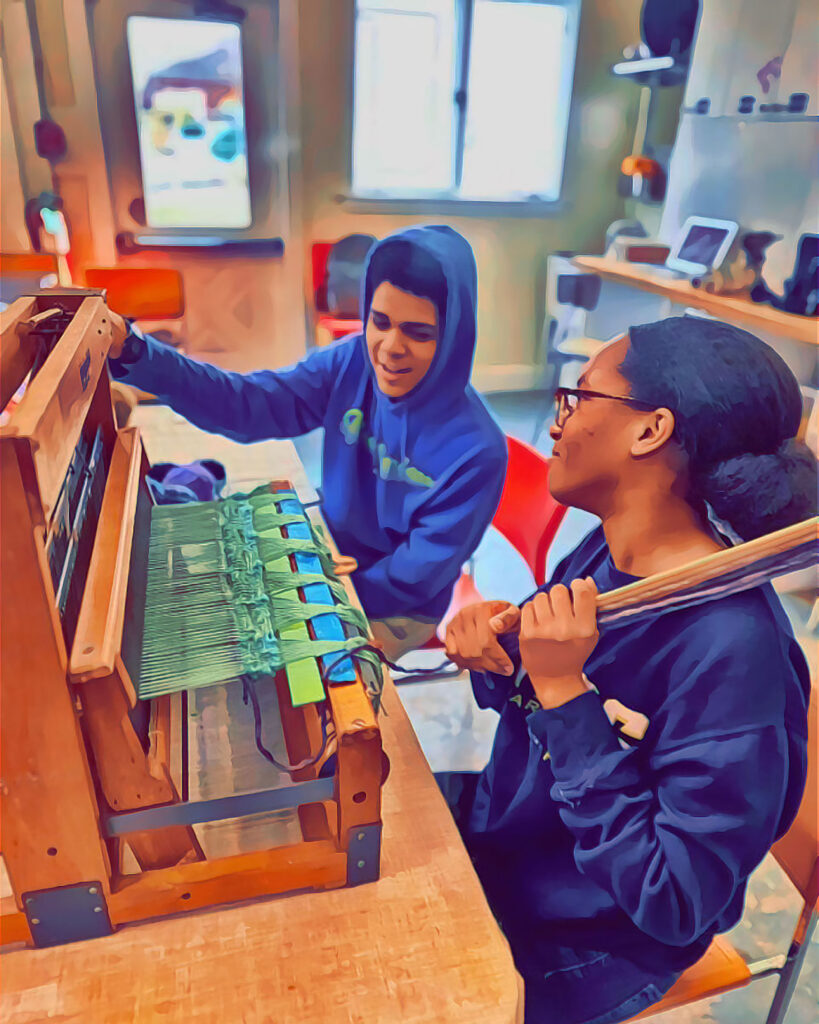
How it works
The first year, called Discovery and Exploration, opens the eyes of participants to post-secondary education, exploring what is offered at colleges, universities, trade schools and career interests. In
addition to various departments and science labs at Salve Regina, students visited Brown University, Fort Adams, Jamestown Art Center, and East Passage Boatwrights in Bristol, a wooden boat construction and restoration company owned by Carter Richardson, a Newport resident and graduate of IYRS School of
Technology and Trades.
Richardson spoke to students about the importance of learning a skill, whether in college or from attending a trade school.
“Having a skill makes you indispensable, and that is one of the most important things you need to develop as you start your career,” Richardson told students. “What trade schools like IYRS offer is a way to gain a tremendous amount of experience and knowledge over a short time to get you ready to join that work force. To live in a state that is so heavily invested in the Blue Economy, it is a huge leg up to have that in your backyard.”
At the Jamestown Art Center, students toured the gallery, visited the printmaking and ceramics studios, and tried weaving. Employees in various roles spoke to the students, including education director Melinda Fredericks.
“It was inspiring to have the Pathways students at the JAC,” says Fredericks. “Most memorable was sharing how arts experiences shaped our lives from an early age and all of the different ways we came to have careers in the arts.”
At the end of the academic school year, Pathways students traveled with Neary to Washington, D.C., where they toured the campuses of Georgetown, George Washington and Howard universities, and
visited landmarks, including the Martin Luther King, Jr. Memorial and National Museum of African American History and Culture, which is a Smithsonian Institution museum.
“How would you know what you’re even interested in if you’ve never been on a college campus? If you’ve never visited other colleges and seen, ‘That’s a big one, that’s a small one,’” Neary says.
At the end of this school year, she’ll take cohorts one and two, which begin the program this fall, to colleges, universities and cultural institutions in New York, and the year after, along with cohort three, to
Boston. Throughout each year, cohorts visit colleges, universities and trade schools closer to home.
During the program’s inaugural year, Salve Regina announced it would grant ever y student who completes the Pathways program conditional admission to the school.
“Every single one of them,” Neary says proudly. “They may or may not choose to come to Salve — the purpose of the program is not for them to come to Salve, otherwise why go see other college campuses? The purpose of the program is to show there are so many options out there. But we’re going to remove one stressor from that entire process, with them knowing that if you want to go to your hometown university, you have a spot.”
And when it comes to educational expenses, the university’s financial aid team meets with parents in each cohort to talk about resources available at most institutions, including grants, scholarships, loans and the Free Application for Federal Student Aid (FAFSA), used by virtually all two- and four-year colleges, universities, and career schools for awarding federal, state, and college-funded student aid.
“I think that the biggest thing for folks to understand is this is not a recruiting tool to get students to Salve,” Neary explains. “If you come, that’s great, but what we are doing, what we’re hoping to do, what Mike Monahan is hoping to do, what the counseling team at Rogers is hoping to do, is open the eyes of students who otherwise do not have the opportunity to see what else is out there.”
